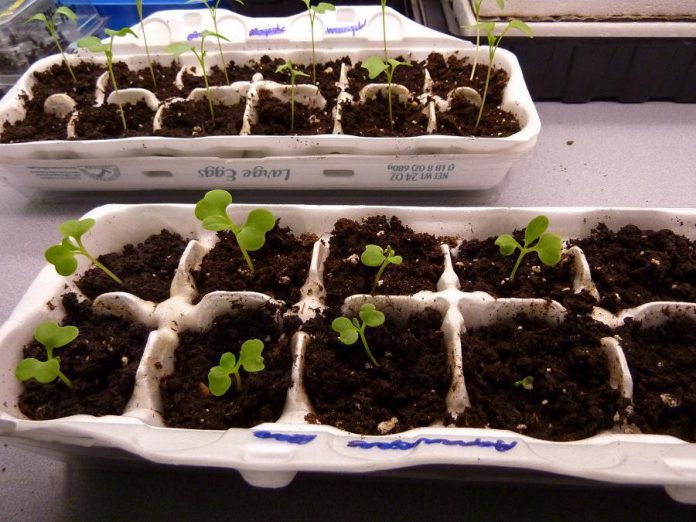
In what seems like a relentless winter filled with polar vortexes and ample snow, many of us are counting down to the first day of spring, now 23 days away. While spring may still be a good three weeks away, there are plenty of ways to help push away the winter blues, especially if you’re a gardener.
With many of us receiving seed catalogues each week, now is the time to start thinking about starting seeds indoors to get an early start on the 2013 growing season.
A general rule of thumb is to start your seeds two to six weeks before the last frost date. This average date of the last frost in the Peterborough area is May 18th. Following the six-week rule of thumb, indoor seed starting should happen somewhere around the last week of March or first week of April — meaning now is the time to decide what you want to grow this year and order your seeds.
Before you even think about planting, you need to spend some time choosing quality seed that will have good rates of germination. Seeds traditionally found in big box stores sometimes are not as fresh as those purchased directly from a reputable seed company. A quick Google search brings up several local Canadian mail-order companies including Cottage Gardener, Terra Edibles, Greta’s Organics, and Mountain Grove.
One of the best options of obtaining quality seed is to attend a seed exchange. At a seed exchange you can meet other gardeners and find quality, locally adapted seeds, which are some of the best seeds available. You don’t necessarily have to bring seeds to trade with others, you can purchase seeds as well. Seedy Sunday, Peterborough’s seed sale and exchange, is being held on Sunday, March 9th at George Street United Church from 1 to 5 p.m.
Once you have your seeds, you can then think about planting. Hot peppers, brassicas, and onions should be started six weeks before the last frost date; tomatoes, basil, eggplant, and okra four weeks before; and cucumbers, squash, melons, and corn two weeks before. Carrots, beets, beans and greens should be planted directly in the ground, after the danger of frost has passed.
Choosing the right soil is very important to growing successful seedlings indoors. Your best bet is to use “soilless medium” — commonly called “pro-mix” — to start your seeds. This soil is light and has minerals mixed in that all your seedlings to get off to good start. Once you transplant your seedlings outdoors, you can add compost to give them an extra boost. Moisten the soil evenly before adding to containers.
Speaking of containers, there’s no shortage of different types and varieties to choose from. You don’t need to spend a lot, however. Get creative and use household items like egg cartons, paper towel rolls, or milk cartons. As long as it allows for sufficient drainage, pretty much anything goes.
Now for the fun part: getting your hands dirty. Fill your containers with your moist soilless medium and place one or two seeds in each one. Create a small divot in the soil to contain your seeds. Cover lightly and label the containers so they won’t get mixed up.
Once your seedlings have emerged from the soil, having good airflow around them is important. Putting a fan near them will prevent dampening-off disease or mould from forming. Another advantage to doing this is it allows them to become stronger and more resistant to wind, once they’re transplanted outside.
Some seedlings will outgrow their pots and will need to be moved to a more spacious temporary home. As before, you can be creative with your pots, as long as there is enough drainage. Combine peat moss, vermiculite, compost, and potting soil to provide ample nutrients for your growing seedlings. Fill your new containers to the halfway point with the soil mix and carefully remove and plant your seedlings.
Before your plants go in the ground, it’s important to harden them off first. Hardening off allows them to become adjusted to the harsh outdoor elements and ensures a better rate of survival.
Over the course of a week or two, place them outside in filtered sunlight on warm spring days, gradually increasing the amount of time they spend outside in the sun and in cooler temperatures.
After any threats of frost have passed, transplanting outdoors is the next and final step. Choose a location that’s well suited to each type of plant you’re growing. Planting instructions are typically found on the back of most seed packets or easily dug up online.
For additional resources and information, check out the Peterborough Community Garden Network’s website at growpeterborough.org.


























